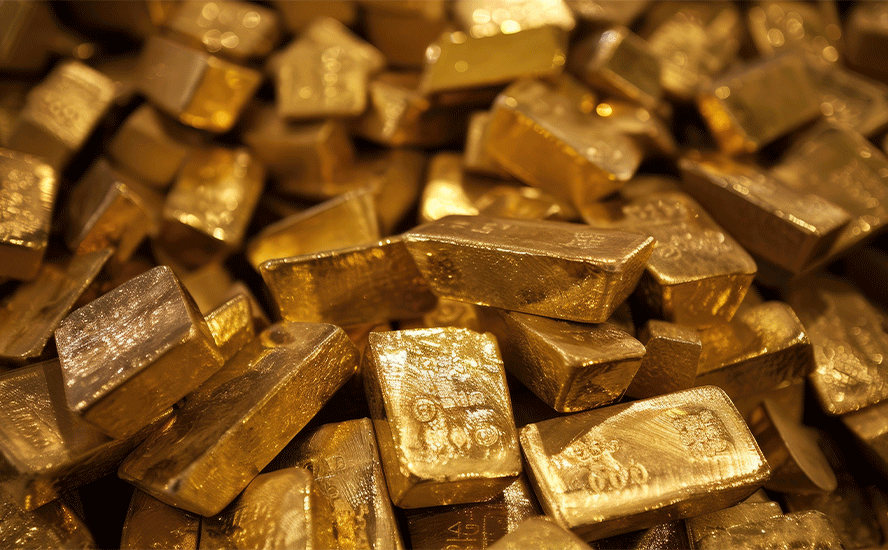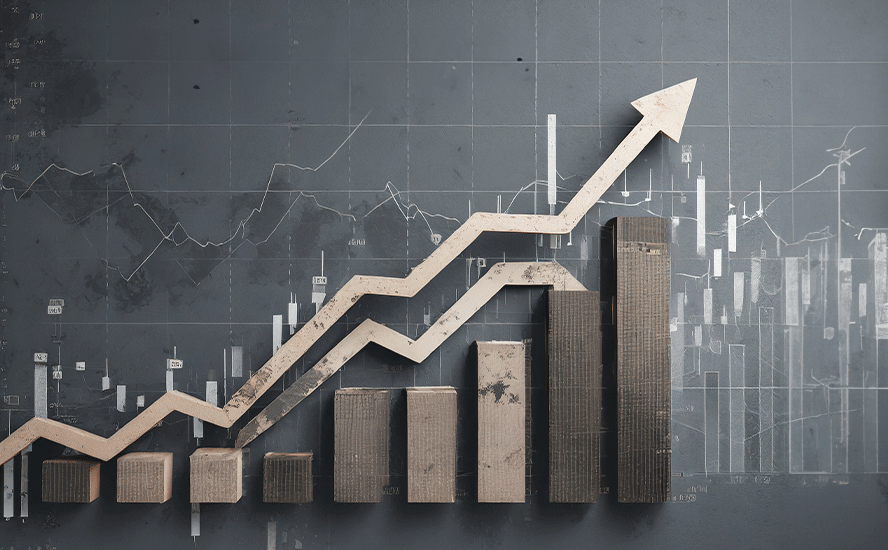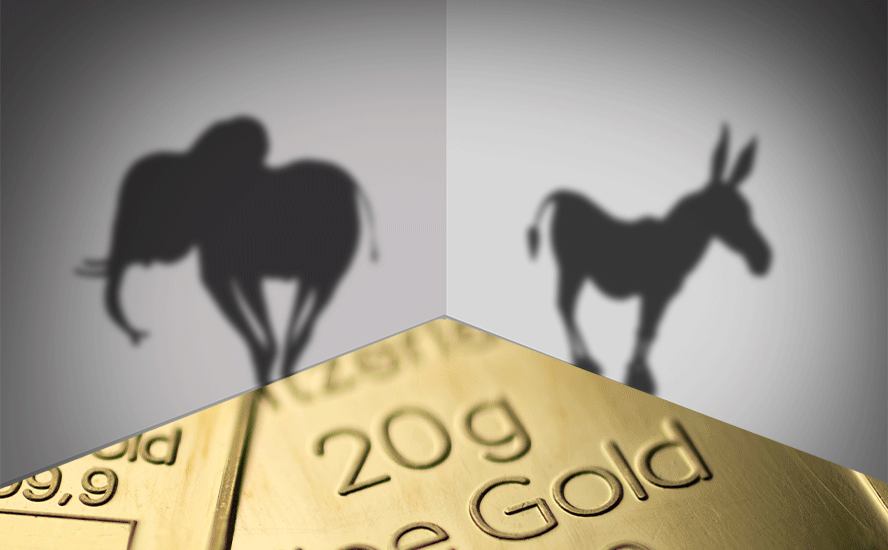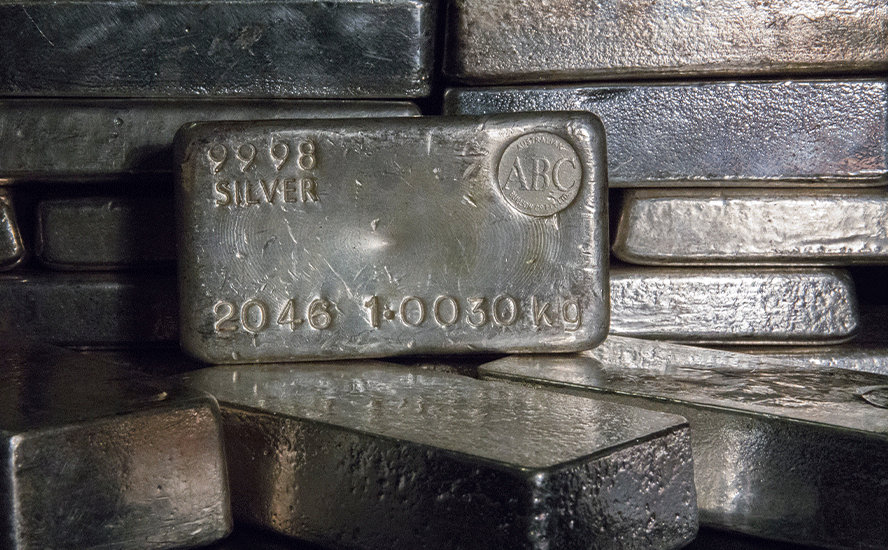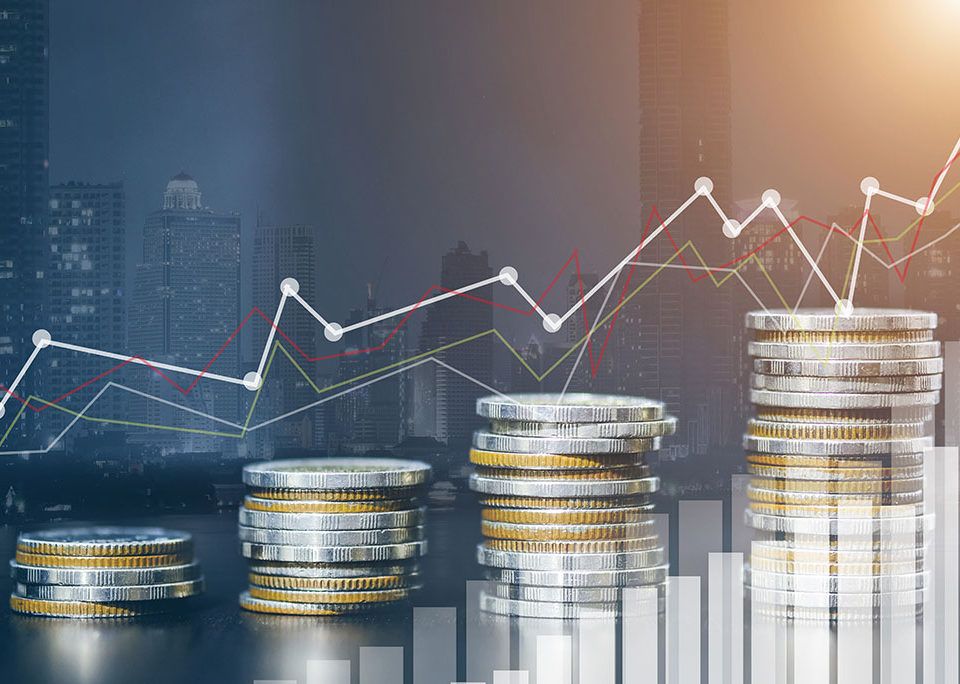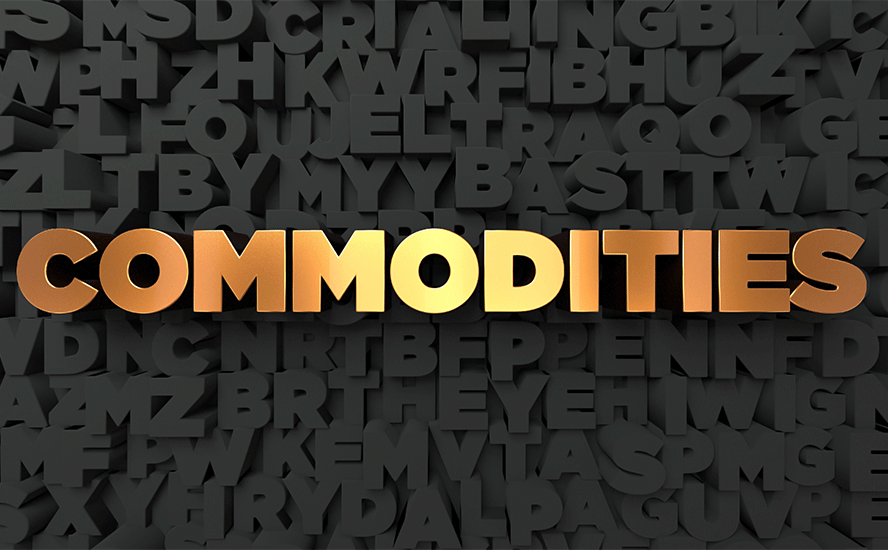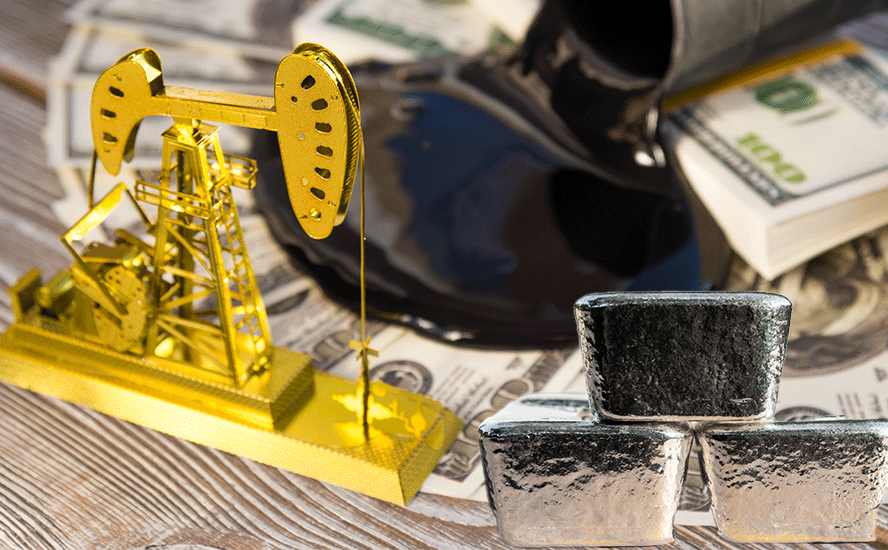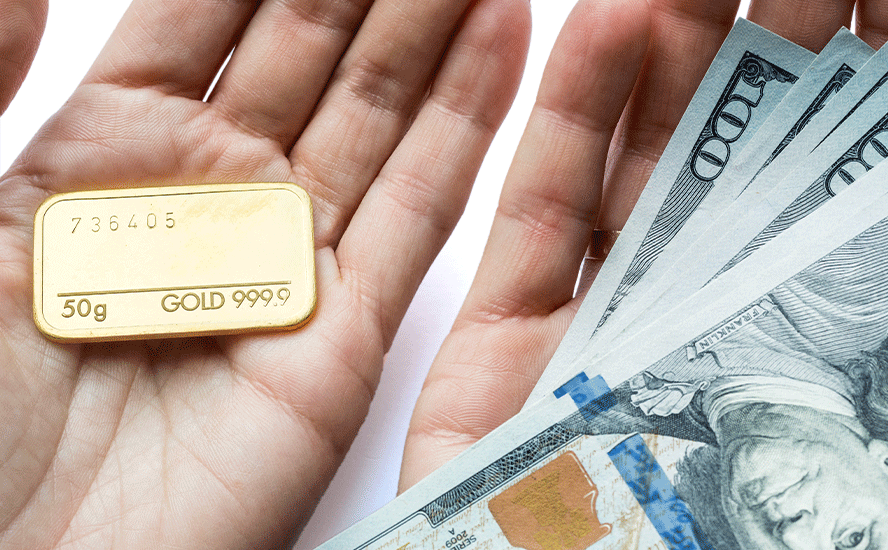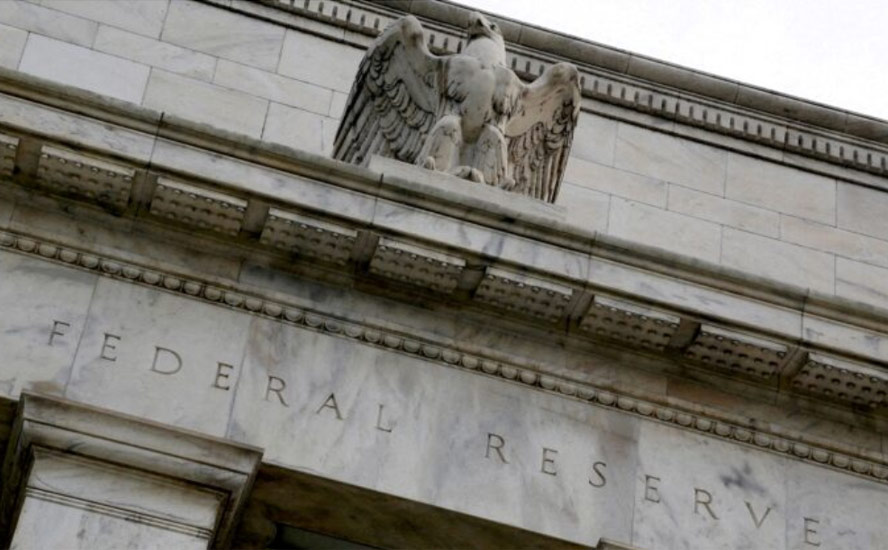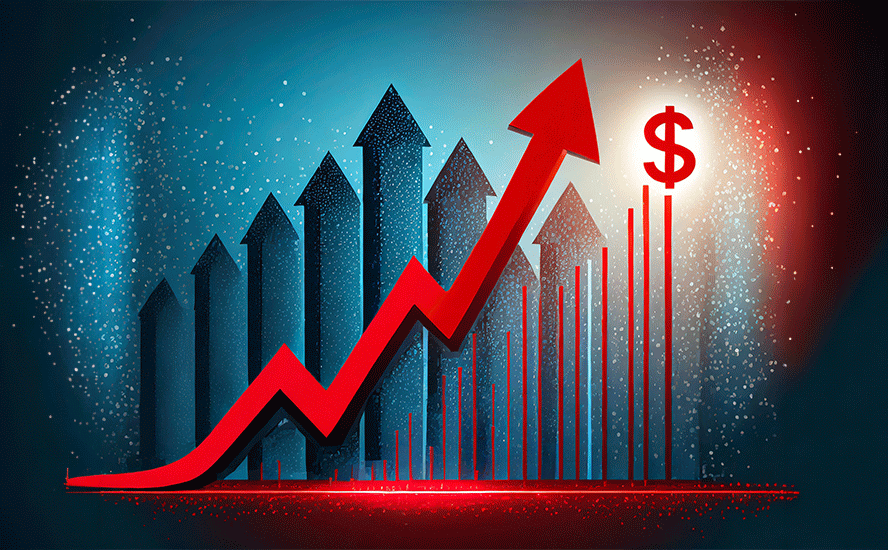2020.07.08
The US economy is nowhere near recovering from the lockdown measures imposed by cities and states during the covid-19 pandemic, and that is weighing on the US dollar, which has fallen sharply since March.
The beneficiary, as expected, has been gold (and silver), which normally moves in the opposite direction as the greenback. Year to date, spot gold has risen 16% to $1,811/oz, while the US Dollar Index (DXY), a measure of its value against a basket of currencies, has slumped 6% to 96.60.
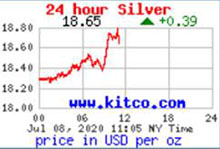
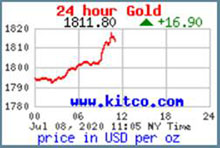
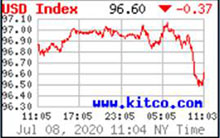
It’s hardly surprising to see such a dramatic reversal of fortune for DXY, which on March 20 hit a 17-year high of 102.82, amid a global shortage of dollars. As the viral outbreak prompted economic lockdowns in February and early March, investors, companies and households hoarded cash.
The buck’s retreat is directly correlated to America’s failure to control the virus, whose case loads are growing daily while in other countries, including Canada, they are falling.
States that reopened too early are seeing a resurgence of infections that are threatening to overwhelm hospitals and front-line health-care workers.
However, there must be other factors at play in the dollar’s demise. In this article we tackle the question, why is the dollar dropping and what are the consequences for gold and silver?
The second wave
I’ve said all along that there would be a resurgence of covid in the United States. Reopenings there are a jumble, with each state doing its own thing and the federal government offering only guidelines not rules. A failure to adequately test and contact trace have made it worse. How do you stop the virus from spreading if you don’t know where it is?
In fact I believe there will be three waves of coronavirus: The first wave that happened in mid-March, a second wave of cases returning due to states and cities reopening too soon, and a third wave in the fall, after warm weather gives way to colder temperatures and the virus is allowed to infiltrate human hosts – a lethal mix of covid and flu.
The House Energy and Commerce Committee confirmed there is likely to be a surge of cases in fall and winter, coinciding with flu season.
Despite all 50 states being in various stages of reopening, the United States is still being ravaged by covid-19. Cases are climbing in 40 states, several of which have re-imposed restrictions such as closing beaches, bars and restaurants. The US continues to lead the world with a case tally of 3.0 million.
Donald Trump, the science-denying, conspiracy-believing US President, has the blood of nearly 133,000 American dead on his hands, for failing to anticipate and properly manage the pandemic.
He and his vice president regularly avoid wearing masks even when in hospital settings and others are wearing them. Many Americans are following their “lead”, citing infringement of civil liberties as a reason for failing to “mask up” in public places. In America, medical masks have turned into a blue versus red political/ cultural issue.
A recent report from Goldman Sachs states that a national face-mask mandate could save the US economy from a 5% hit to GDP, and could partially substitute for renewed lockdowns. It cites data indicating that countries that didn’t impose masking protocols saw increases in both infections and number of deaths.
During the July 4th long weekend, Trump sought big crowds at his events including a fireworks display at Mount Rushmore Friday night, despite the Centers for Disease Control warning that such gatherings present a high risk of the virus spreading.
Rather than expressing sorrow at the number of people who have died, Trump in his Fourth of July speech vowed to “safeguard our values” from enemies within, referring to the recent protests over police brutality and racial inequality following the death of a black man by a white police officer in Minneapolis. He did not mention the coronavirus deaths.
“We are now in the process of defeating the radical left, the anarchists, the agitators, the looters, and the people who, in many instances, have absolutely no clue what they are doing,” Trump said on the South Lawn of the White House, Saturday. “We will never allow an angry mob to tear down our statues, erase our history, indoctrinate our children.”
Economic pain
The connection between the pandemic that continues to rage, and a declining dollar, are the measures being taken to contain the economic fallout from covid-19, ie., low interest rates and record-high fiscal stimulus spending, which is racking up debt.
On June 9 DXY fell to a three-month low, after the US Federal Reserve announced there would be no policy changes, meaning a continuation of rock-bottom interest rates (the benchmark federal funds rate sits at a range of 0.25% to 0%) and asset purchases aimed at stabilizing the American economy.
In their regular meeting, the Federal Open Market Committee said in a statement they project a 6.5% decline in gross domestic product in 2020 and a 9.3% unemployment rate at year’s end. The committee also promised to maintain bond purchases at the current pace of $80 billion per month in Treasuries and $40B per month in mortgage-backed securities.
The Fed’s dovish response to the pandemic has had a predictable effect on the country’s currency unit. Back in April, economists were forecasting the buck would test new lows by the end of the year, due to the Fed cutting US interest rates deeper than other countries.
Before the pandemic, US had the highest sovereign-debt yields among developed countries, which supported the dollar, as foreign investors sold currencies with negative rates such as the euro, to buy dollars in order to profit from higher yields.
However, that advantage was eliminated when the Fed imposed two emergency rate cuts, as well as announcing interventions in the markets for US Treasuries, mortgage-backed securities, commercial paper and corporate debt. (a central bank’s policy of buying up debt to introduce liquidity into the financial system is called quantitative easing, also known as printing money)
In a matter of months, the Fed’s balance sheet has grown from around $4 trillion to $6 trillion.
The US government and policymakers around the world have no choice but to unleash massive stimulus programs to help their citizenries to deal with the worst economic downturn since World War II.
According to Bank of America, via Zero Hedge, the amount of global fiscal and monetary stimulus has already reached an astronomical US$18.4 trillion in 2020, consisting of $10.4 trillion in government spending and $7.9 trillion in central bank asset purchases, “for a grand total of 20.8% of global GDP, injected mostly in just the past 3 months!”
The IMF predicts the percentage of global public debt to rise from 69% of national income last year to 85% in 2020.
That poses a problem for countries that borrowed in dollars, but now face a tough time repaying those debts. American policymakers can only let the dollar strengthen so much further, to avoid massive debt defaults.
At home, racking up so much of its own debt means the United States has to keep interest rates low, to prevent onerous borrowing costs.
The country’s public sector deficit is set to nearly triple, while public debt will rise to 107% of GDP, according to the IMF.
“The U.S. is being the most aggressive with easing and government spending and as a result we expect to see the biggest deterioration in public finances there,” The Financial Post quotes Mathieu Savary, a strategist at BCA Research.
As an example of explosive monetary stimulus via money printing, consider: at the end of 2019, the Fed’s balance sheet as a percentage of GDP was 19%; six months into 2020, it has already doubled, to 39%.
Question is, is all of this stimulus working? The economic data coming out of the United States isn’t promising, although to be fair, the June figures are better than previous months. The economy regained 4.8 million jobs last month, but 45 million American workers have filed claims for jobless benefits. The surge in coronavirus infections threatens to throw the recovery off course.
Without paychecks, a lot of people are having trouble paying their bills. According to the Wall Street Journal, payments have been skipped on more than 100 million loans since the pandemic washed up on American shores.
Fully 30% of Americans didn’t make their housing payments for June. During and shortly after the 2008-09 financial crisis, more than a million mortgages were foreclosed in the US.
On Monday Goldman Sachs downgraded its US growth outlook for 2020, forecasting that a reimposition of covid-19 restrictions will (no doubt) weigh on consumer spending, which at around two-thirds of GDP is the engine of the US economy. In a note to clients, Jan Hatzius, the bank’s chief economist, says the economy will contract by 4.6%, versus a previous forecast of 4.2%. In 2021 a 5.8% rebound is expected.
Marketwatch reported him saying “Over the last few weeks, the COVID situation in the U.S. has worsened significantly to the point where the U.S. is now a notable outlier among advanced economies.” States representing over half the US population now meet just one or zero of the CDC’s recommended criteria for reopening, he added.
As we remarked in a previous article, paralyzed by fear and uncertainty about their futures, wage earners are delaying or canceling purchases; combined with literally hundreds of thousands of businesses closing shop during covid-19 lockdowns, the crisis has Americans hoarding more money than we’ve seen in decades.
During the depths of the virus, in April, consumer spending declined by a record 13.6%. A disturbing trend, as far as the economic recovery, is the reluctance of higher-income individuals to return to normal spending levels.
It is unclear whether more stimulus is coming. Some of the ideas being discussed are an extra check for $1,200, a $2,000 monthly payment until the pandemic ends, or tax breaks for businesses instead of direct payments.
What we do know is that these measures alone will be insufficient to kickstart the US economy. At best they will “keep the wolf from the door”, meaning high savings and low spending will be the norm until covid-19 relents and businesses start re-hiring.
Exorbitant privilege?
In the 1960s French politician Valéry d’Estaing complained that the United States and its exporters enjoyed an “exorbitant privilege” due to the dollar’s status as the world’s reserve currency. He had a point.
Because the dollar is the world’s currency, the US can borrow more cheaply than it could otherwise (lower interest rates), US banks and companies can conveniently do cross-border business using their own currency, and when there is geopolitical tension, central banks and investors buy US Treasuries, keeping the dollar high.
The dollar is still the reserve currency, but how important is it right now, with all that is going on in the world? Maybe the question should be “how long can the world afford the US$?
Renowned Yale economist Stephen Roach believes that due to the decoupling of trade with its partners, and the rise of China, the dollar’s reign as the king of currencies looks shaky.
Appearing on CNBC’s Trading Nation a couple of weeks ago, the university lecturer forecasts a 35% decline in the US currency against its major rivals, due to the nation’s rising deficit (it recently tripled) and dwindling savings rate.
“The dollar is going to fall very, very sharply,” he told the business network.
In a Bloomberg op-ed, Roach said the covid public health crisis will only amplify the dollar’s woes.
Gold is going higher
Goldman Sachs believes a weaker dollar will boost the purchasing power of major gold consumers in emerging-market (EM) economies like China and India. In its latest Commodities Research note, the investment bank upgraded the precious metal on “debasement fears”, noting the two main drivers sending gold prices higher will be lower real rates (interest rates minus inflation) and higher EM demand:
Our economists expect inflation over the next 5 years to average 1.73% vs current market pricing of 1.02%. Therefore, real rates in the US are expected to continue to fall, increasing debasement concerns and putting upward pressure on gold (see Exhibit 9).
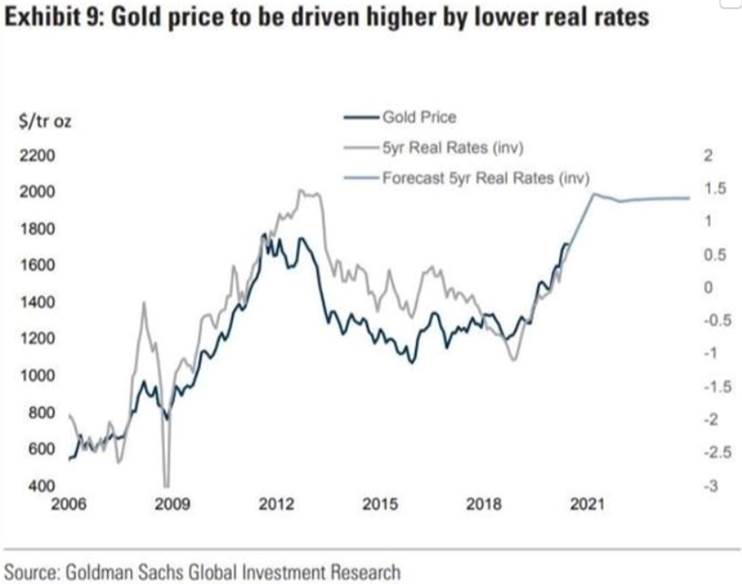
Other analysts agree, there is nowhere for gold to go but up. In his daily note, Adrian Ash, director of research at BullionVault, wrote, “last week’s swing towards 2011 levels in U.S. dollar terms near $1,800 per ounce is attracting a flood of new interest, piling on top of January-June’s heavy demand. Fear of missing out could spur a dramatic spike [in gold] if the economic, health and political news continues to darken. Heaven forbid we get a hot, angry summer to match 2011. But rarely have there been so many tailwinds for gold.”
He also noted, via Marketwatch, “The economic slump caused by Covid-19 has spurred record government deficits and central-bank inflation to try and offset it. China’s power grab in Hong Kong is worsening geopolitical tensions ahead of November’s U.S. election, with the U.K.’s looming no-deal exit from the [European Union] now baked in the crust for December.”
Conclusion
The drop in the dollar can usually be correlated with a rise in the price of gold. The current dollar weakness is directly connected to the coronavirus crisis that continues to plague the US economy, and all the measures being taken to try and limit the damage, including near 0% interest rates, trillions in fiscal spending, practically unlimited money-printing, debt out the wazoo, and the spectre of rising inflation.
Until we can say, in a broad sense, that re-openings have succeeded and the coronavirus is beaten, gold is going to continue to do well.
The way we see it, gold has it made, whether economic growth picks up or it continues to muddle along, still pinned down by the coronavirus. In the current deflationary environment, gold is doing well because of all the drivers that make it such an attractive investment – a high global debt to GDP ratio from the combination of falling economic growth and rising national debts, owing to massive virus-related stimulus; growth of the M2 money supply lighting a fire under gold prices; continued low interest rates until at least 2022; a steady flow of safe-haven demand, due to the numerous global hot spots particularly with regard to a more belligerent China; and social/ economic chaos gripping the United States as it enters a presidential election.
Gold is also poised to gain in the likely event that all of this stimulus – at last count $18.4 trillion! – leads to inflation.
If inflation goes, say, above 3%, yet interest rates remain near zero, that would create another bullish condition for gold – negative real rates (interest rates minus inflation). When US Treasury bond yields turn negative, investors typically rotate their funds out of bonds, into gold.
As for silver, we have recently seen the gold-to-silver ratio decline, from over 125:1, to the current 97.5:1, meaning it takes 97.5 ounces of silver to buy one ounce of gold. Historically, the ratio is closer to 60:1, so silver is really undervalued compared to gold.
We have the same bullish indicators for silver as for gold, in terms of safe-haven demand inciting investors to park their money in silver bullion, silver ETFs or silver mining stocks, and the fact that silver is not subject to inflation like paper currencies.
Its hundreds of industrial applications make silver very responsive to the condition of the global economy. Improved economic conditions resulting from countries successfully reopening from coronavirus lockdowns, would be great for silver explorers, and their investors, who know the best leverage against rising metals prices is to own an early-stage junior with a sizeable and scalable deposit in a mining-friendly jurisdiction.
Richard (Rick) Mills
aheadoftheherd.com
subscribe to my free newsletter
Ahead of the Herd YouTube
Ahead of the Herd Facebook
Ahead of the Herd Twitter
Legal Notice / Disclaimer
Ahead of the Herd newsletter, aheadoftheherd.com, hereafter known as AOTH.
Please read the entire Disclaimer carefully before you use this website or read the newsletter. If you do not agree to all the AOTH/Richard Mills Disclaimer, do not access/read this website/newsletter/article, or any of its pages. By reading/using this AOTH/Richard Mills website/newsletter/article, and whether or not you actually read this Disclaimer, you are deemed to have accepted it.
Any AOTH/Richard Mills document is not, and should not be, construed as an offer to sell or the solicitation of an offer to purchase or subscribe for any investment.
AOTH/Richard Mills has based this document on information obtained from sources he believes to be reliable but which has not been independently verified. AOTH/Richard Mills makes no guarantee, representation or warranty and accepts no responsibility or liability as to its accuracy or completeness. Expressions of opinion are those of AOTH/Richard Mills only and are subject to change without notice. AOTH/Richard Mills assumes no warranty, liability or guarantee for the current relevance, correctness or completeness of any information provided within this Report and will not be held liable for the consequence of reliance upon any opinion or statement contained herein or any omission. Furthermore, AOTH/Richard Mills assumes no liability for any direct or indirect loss or damage or, in particular, for lost profit, which you may incur as a result of the use and existence of the information provided within this AOTH/Richard Mills Report.
AOTH/Richard Mills is not a registered broker/financial advisor and does not hold any licenses. These are solely personal thoughts and opinions about finance and/or investments – no information posted on this site is to be considered investment advice or a recommendation to do anything involving finance or money aside from performing your own due diligence and consulting with your personal registered broker/financial advisor. You agree that by reading AOTH/Richard Mills articles, you are acting at your OWN RISK. In no event should AOTH/Richard Mills liable for any direct or indirect trading losses caused by any information contained in AOTH/Richard Mills articles. Information in AOTH/Richard Mills articles is not an offer to sell or a solicitation of an offer to buy any security. AOTH/Richard Mills is not suggesting the transacting of any financial instruments but does suggest consulting your own registered broker/financial advisor with regards to any such transactions


